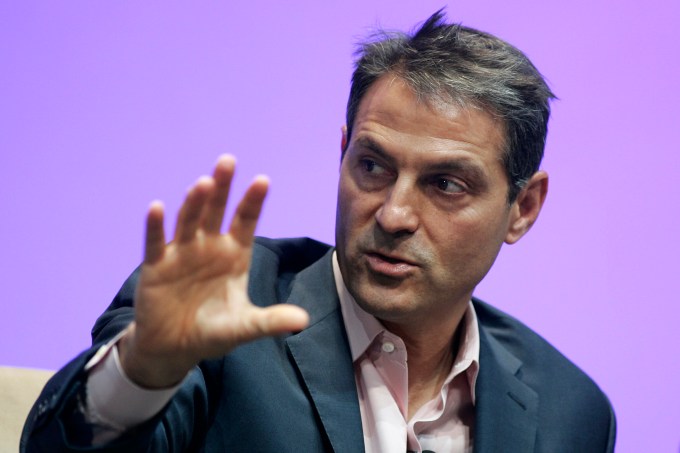Of the 100 most-watched live telecasts in the US in 2005, 14 were sporting events; in 2015, sporting events comprised 93 of the top 100 telecasts. That shift occurred because TV shows are shifting to online or on-demand viewing, and live broadcasts of the biggest sports are the main thing TV networks have left to draw in live audiences. But the need to keep those sports on TV and off streaming services is only accelerating the rate at which young people are tuning into other sports leagues instead.
The rapid adoption of subscription video streaming services like Netflix and Hulu and of social live streams on Facebook, YouTube, and Twitch is enabling massive growth by sports leagues that you won’t normally see on TV. In the streaming era, more sports – and new types of sports like esports – keep thriving while interest in traditional pro leagues like the NFL and MLB declines.
OTT is where the growth is
The central narrative in the global film/TV industry right now is the response of incumbent companies to the growing dominance of Netflix, Amazon, and other streaming (aka “OTT” or over-the-top) services. The incumbents are merging to consolidate ownership of must-have shows onto a smaller number of new OTT services that will each be stronger.
The majority of American households have a Netflix subscription (i.e. access to one of Netflix’s 56M US accounts), another 20M have a Hulu subscription, the number of OTT-only households has tripled in 5 years, and 50% of US internet users use a subscription OTT service at least weekly. Almost one-third (29%) of Americans say they watch more streaming TV than linear TV, and among those age 18-29 it’s 54% (with 29% having cut the cord on linear TV entirely). People, especially young people, want to watch shows on their own time and on any device, and they get more value from a few $8-40 per month subscription platforms than a $100+ per month cable bill.
Meanwhile, social live-streaming platforms that got their start enabling people to either vlog or watch video gaming are expanding to all sorts of live broadcasting: Twitch averaged 1 million viewers at any given point of day in January, and there were 3.5 billion broadcasts over Facebook Live in the first two years after it launched (with 2 billion users viewing at least one).
We’ve hit the pivot point where media is streaming-first. Netflix is now the leading studio in Hollywood, spending $13 billion this year on content. Linear TV viewing is declining: every major cable network (except NBC Sports) has declining viewership and aging viewers. Between 2007 and 2017, the median age of primetime viewers on ABC, CBS, NBC, and Fox went up 8-11 years and are all in the 50s or 60s.
Major pro sporting events are the last bastion of TV networks because the dominant brands are, for the most part, only available live on TV. Beyond those, the only content getting large audiences to tune in simultaneously are a couple Hollywood awards shows and premieres or finales of a couple hit shows (Big Bang Theory and NCIS).
The exclusive broadcast rights to those live sports events – particularly the NFL, NBA, MLB, and top NCAA basketball and football games – are the last defense for major broadcast networks. They are the reason for younger Americans to not cut the cord. ESPN makes $7.6 billion per year in carriage fees from cable companies paying for the right to carry the main ESPN channel (the other ESPN channels add another $1 billion); that number is increasing even as ESPN’s viewership is declining.
Disney (ESPN’s owner) and other leading broadcasters don’t want to let people watch major sporting events online instead (at least not easily or cheaply) because doing so would pull the rug out from under their traditional revenue stream and OTT revenue (subscription + ads) won’t make up for it quickly enough. This problem is only exacerbated by the fact that TV networks are paying record sums for exclusive broadcast rights to top sports leagues out of fear that losing them to a rival could be a nail in their coffin.
This strategy is delaying, not stopping the shift in consumption habits. More and more young people are tuning out (or never tuning in) to the major pro sports on TV, and the median age of their audiences shows that: 64 for the PGA Tour, 58 for NASCAR, 57 for MLB, 52 for NCAA football and men’s basketball, and 50 for the NFL…and all are getting older. (Cable news networks, the other holdouts who are still doing well on live TV face the same situation: the average age of Fox News, MSNBC, and CNN viewers is now 65, 65, and 61 respectively.)
The major pro sports staying on linear TV has expanded the market opening for new sports to fill the open space with young people who mainly consume content online. In fact, a growing marketplace of different sports leagues (including esports) developing their own fanbases is an inevitability of the shift to OTT video as it lowers the barrier to entry to near-zero and let’s geographically dispersed fans unify in one place.
1. Lower barrier to entry for distribution

Lawn bowling is no longer your grandfather’s sports league. Mint Images/Getty Images
Niche sports leagues – or frankly, even big sports leagues that just aren’t at the scale of professional football, baseball, basketball, and hockey – have always had a hard time getting coverage on television. But you can produce and distribute video for an online audience more cheaply than for a television audience.
In fact with Facebook Live and Twitch, you can stream live video for free, and you can share clips across every social channel to attract interest. To launch your own OTT service or partner with an existing one, you don’t need to start with a massive audience from the beginning and you don’t need millions of dollars from sponsors just to break even.
Having signed over 150 new deals this year alone for its 20+ sports verticals (which will stream 2,500 live events in 2018), Austin-based FloSports has established itself as the go-to OTT partner for sports leagues with an established, passionate following that aren’t massive enough to garner regular ESPN-level coverage.
From rugby, track & field, and wrestling to bowling, competitive marching band, and ballroom dance, millions of Americans have participated in these activities in their youth and through clubs as adults but rarely see them on television. In fact, the rare instances when such sports are on TV – like their national championships – the league is usually paying large sums (potentially hundreds of thousands of dollars) for that airtime rather than getting paid by the broadcasters.
FloSports gives a home to the superfans of its partner leagues, with full coverage of the sport and commentary meant for real fans. It produces events in the manner best fit to highlight the action and turns superfans – who generally pay a subscription – into evangelists who recruit friends. There are numerous sports that have millions of participants yet no active, high-quality event coverage; those are underserved markets.
By tapping into this, FloSports properties (like FloWrestling, FloTrack, etc.) have gained hundreds of thousands of subscribers and created a surge of interest in teams like Oklahoma State’s wrestling team, which saw an 144% increase in live stream viewing and 68% growth in event attendance after joining FloWrestling (leading to them to set an all-time attendance record in the university’s basketball arena of 14,059 people). In the first half of 2018, FloSports’ various Instagram accounts collectively received 307M video views, more than the collective accounts of Fox Sports or of all NFL teams (and NFL Network).
2. Going global right away.

Johanne Defay of France at a World Surf League event. Mark Ralston/AFP/Getty Images
The top pro sports leagues have geographically concentrated fan-bases that fit the geographic restrictions of TV broadcasters, which end at a country’s border. Online streaming empowers sports that have large fan bases who aren’t geographically concentrated to aggregate in the digital sphere with enough eyeballs (and paying subscriptions) to drive engagement with the sport’s content through the roof.
Since being acquired in 2015 and renamed World Surf League, the governing body of professional surfing has developed a large global following – with 6.5M Facebook fans and 2.9M Instagram followers – through the launch of live streams and on-demand video on its website and mobile app, plus partnering with third-parties like Bleacher Report’s OTT service B/R Live. Only 20-25% of WSL’s viewers are in the US but since its competitions are streamed direct-to-consumer online, they were able to reach surfers around the world right away. After seeing WSL’s Facebook Live streams garner over 14M viewers in 2017, Facebook paid up to become the exclusive live-stream provider for WSL competitions for two years, beginning this past March.
3. Immediate data on audience engagement.
As with all offline-to-online shifts, OTT video streaming captures dramatically more data on audience demographics and engagement than television does, and it does it in real-time. This makes it easier for emerging sports leagues to partner with advertisers and show immediate ROI on their sponsorships, plus it informs their understanding of how to produce their particular type of sporting event for maximum audience engagement.
Karate Combat is a year-old league that builds off the existing base of karate participants and fans around the world (numbering in the tens of millions) with a new competition format specifically intended for OTT. The league allows full-contact fighting and sets the match in a pit (rather than a traditional fighting ring) for better camera angles. It also replaces the traditional focus on having a big in-person audience (which is expensive) and instead sets the fights in exotic locations (like the fight this coming Thursday night on top of the World Trade Center).
Like many emerging sports leagues, Karate Combat is vertically integrated: the league organizing the competitions is also the one producing and streaming the event coverage over its website, mobile apps, and social channels. This not only means it captures the content-related revenue from subscribers, advertisers, and numerous OTT distribution partners, but it sees every data point about fans’ viewing behavior and their interaction with various dashboards (like biometrics on each fighter) so they can optimize both online and offline aspects of the production.
4. Online means interactive

Jujitsu fighting is now an OTT service. South_agency/Getty Images
Online viewing creates the opportunity for functionality you can’t achieve with linear TV: interactive displays overlayed on or next to live video. Viewers can pull up and click through real-time stats, change camera views, or switch overlays (think the the yellow first-down line in NFL broadcasts or coloring around a hockey puck to help you track it on the ice). Ultimately, a more interactive experience means a more social and more entertaining experience (and the sort of deep engagement advertisers value too).
FloSports’ ju-jitsu live streams (FloGrappling) give subscribers multiple live cameras each covering simultaneous matches on different mats so they can click between them. This is a more personalized experience than passively watching one broadcast on TV and it gets that subscriber actively engaged, with their behavior providing valuable data points for FloSports and their deeper interaction likely more compelling to event sponsors.
The display might also highlight live comments from friends or friends-of-friends in order to draw viewers into a more social experience. Discussion of a specific live stream with others watching it has been a central feature for Twitch and Facebook Live and enables the league or team streaming the event to directly engage with fans around the world.
An exception to the OTT-first strategy may be in sports that are entirely new and have zero existing base of participants or fans. Karate, surfing, and video-gaming all have millions of passionate participants around the world, going back decades. A new league like the 3-year-old Drone Racing League (DRL), which has raised $21M in venture capital to develop the sport of competitive drone racing, has to artificially stimulate the development of a fanbase if it doesn’t want to wait years for grassroots competitions to create a critical mass of fans even for a niche OTT service. It’s unsurprising then that DRL has focused on striking TV deals with ESPN, Sky Sports, ProSiebenSat.1, and others to thrust it in front of large audiences from the start, like a new game show hoping its format will entice enough people to take interest.
Power is in the hands of the league owners

Ari Emanuel, chief executive officer of William Morris Endeavor Entertainment. Jonathan Alcorn/Bloomberg via Getty Images
The best position to be in right now is the owner of a sports league that’s rapidly growing in popularity. The competition for audience by both traditional media companies and tech platforms leaves a long list of distribution partners eager for must-have, exclusive content – especially content like sports events that fans want to want live together – and willing to pay up.
Moreover, vertical integration to control your fans’ content viewing experience and own your relationship with them has never been easier. There are direct subscriptions, advertisers, event sponsors, event tickets, a portfolio of possible OTT distribution deals, and merchandising. The potential revenue streams a league can develop are only more numerous when you add in launching a fantasy sports league – like World Surf League has done – and the recent nationwide legalization of sports betting in the US.
Endeavor, the parent company of Hollywood’s powerful WME-IMG talent agency, seems to have recognized this and is an early mover in the space. It bought two sports leagues that have relied on TV deals and event attendance revenue – UFC for $4B and the smaller but rapidly growing Professional Bull Riders for $100M – and, since they each own their content, launched direct-to-consumer subscription platforms (UFC Fight Pass and PBR Ridepass) for super-fans and cord-cutters. (Endeavor also paid $250M to acquire Neulion, the technology company whose infrastructure powers the OTT services of the UFC, PBR, World Surf League, and dozens of others.)
There’s opportunity for new streaming platforms focused on being the media partner for these emerging sports leagues. Inevitably, the opportunity for bundling will consolidate many of the niche subscriptions onto a small number of leading sports OTT platforms, and that’s a powerful market position for those platforms.
What is unclear is if they can defend themselves as the incumbent media and tech companies come around to this phenomenon and commit billions toward capturing the market. The leading sports broadcasting companies all have OTT offerings and want to make them as compelling to potential subscribers as possible even if they exclude content from the biggest pro sports. A larger company that can afford to spend huge sums on exclusive sports streaming rights (like Disney with ESPN/ABC, Comcast with NBC/Sky Sports, CBS with CBS Sports Network, or Discovery with Eurosport) might opt to buy a company like FloSports as part of their deep dive into the space or they might just aim to outbid them when a league’s contract comes up for renewal.
The hope for an independent OTT platform devoted to emerging sports leagues is they get big enough, fast enough that they can afford to keep winning the rights to emerging leagues as those leagues grow and offers from competitors bid prices up. These dedicated OTT services will likely have to secure long-term – think ten years – streaming rights deals or acquire control of some popular new sports leagues outright to hold their own.
Like online distribution triggered an explosion of digital publishing brands and social influencers for every imaginable niche, the rise of high-quality live streaming and subscription OTT services will allow a lot more sports leagues to build an audience and revenue base substantial enough to thrive. There’s more variety for consumers and resources than ever for those with a rapidly growing league to attract fans worldwide.